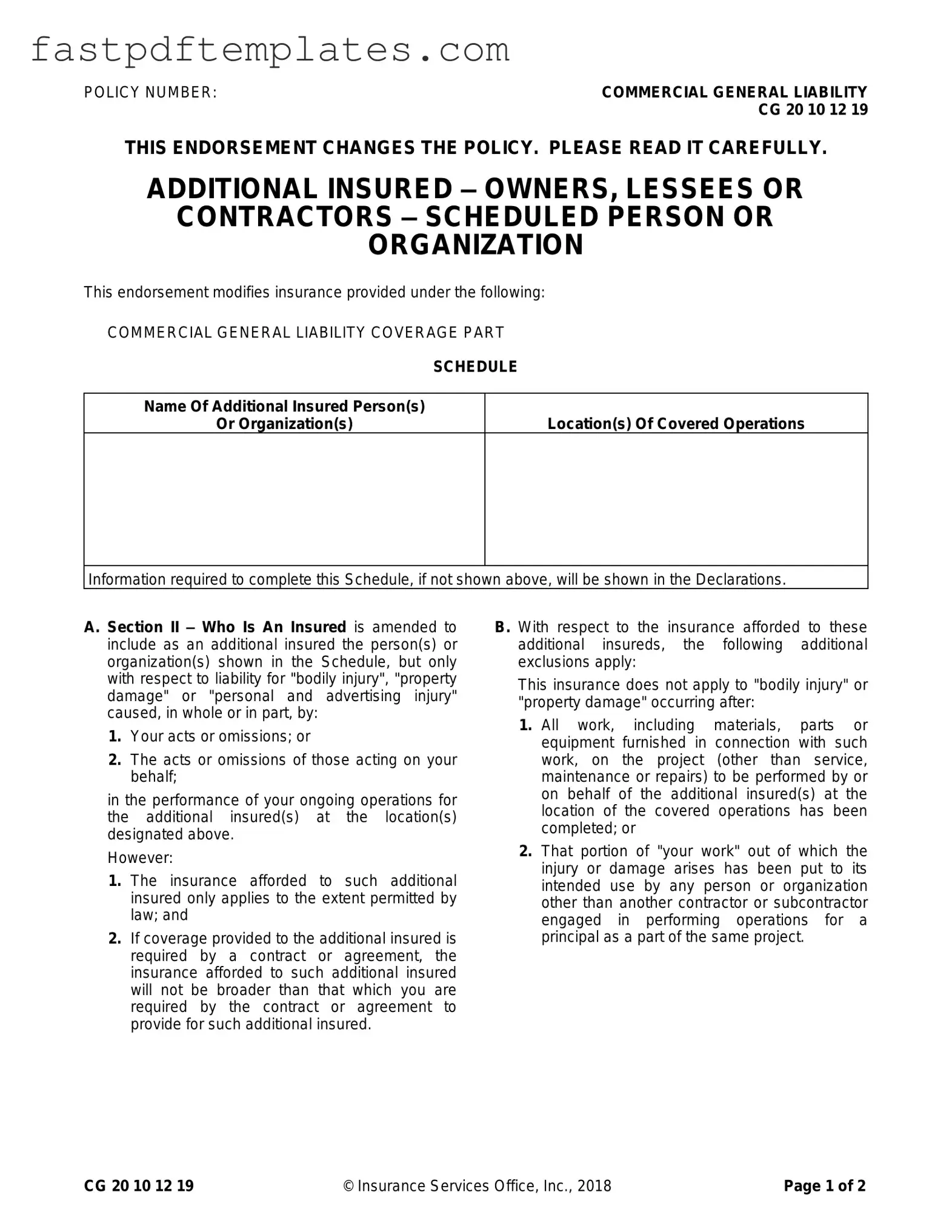The CG 20 10 07 04 Liability Endorsement form shares similarities with the CG 20 10 01 04 Additional Insured – Owners, Lessees, or Contractors form. Both documents serve to extend coverage to additional insured parties, typically required in construction contracts. They define the scope of coverage and specify the conditions under which the additional insured is protected against claims related to bodily injury or property damage. The key difference lies in the specific wording and limitations of coverage, as each endorsement may tailor the terms based on the needs of the primary insured and the contractual obligations involved.
Another related document is the CG 20 37 07 04 Additional Insured – Completed Operations form. This endorsement also adds additional insureds but focuses specifically on completed operations rather than ongoing operations. It provides coverage for claims arising from work that has been finished, which is crucial for contractors and subcontractors. This distinction is important as it addresses the timing of when coverage applies, helping to protect parties after a project is completed.
The CG 20 10 11 85 Additional Insured – Managers or Lessors of Premises endorsement is another similar document. It is designed to provide coverage to property managers and lessors, ensuring they are protected from claims arising from the use of their premises. Like the CG 20 10 07 04, it extends liability coverage but focuses on the specific context of property management. This endorsement emphasizes the importance of protecting those who may not be directly involved in the operations but have a vested interest in the property.
The CG 20 10 09 01 Additional Insured – Designated Person or Organization endorsement is similar in that it allows for the inclusion of specific individuals or organizations as additional insureds. This document is often used in contracts where specific parties need coverage, such as in joint ventures or partnerships. The key similarity lies in the intent to provide liability protection, but the application can vary based on the nature of the relationship between the parties involved.
The CG 20 10 10 01 Additional Insured – State or Governmental Agency endorsement also aligns with the CG 20 10 07 04 form. This endorsement is tailored for situations where state or governmental entities require additional insured status. It ensures that these entities are protected from claims arising out of the operations of the primary insured. The similarity lies in the extension of coverage, but the specific requirements and limitations can differ based on governmental regulations.
The CG 20 10 13 04 Additional Insured – Grantor of Franchise endorsement further exemplifies the concept of extending coverage to additional insureds. This document is specific to franchise agreements, providing liability protection to the franchisor. The endorsement shares the fundamental purpose of extending coverage but is tailored to address the unique risks associated with franchise relationships, highlighting the importance of context in liability insurance.
Lastly, the CG 20 10 08 01 Additional Insured – Vendors endorsement is relevant as it extends coverage to vendors of the primary insured. This form ensures that vendors are protected against claims arising from the products or services they provide. The similarity with the CG 20 10 07 04 lies in the overarching goal of providing liability protection, but the focus on vendor relationships introduces different considerations regarding risk management and liability exposure.

